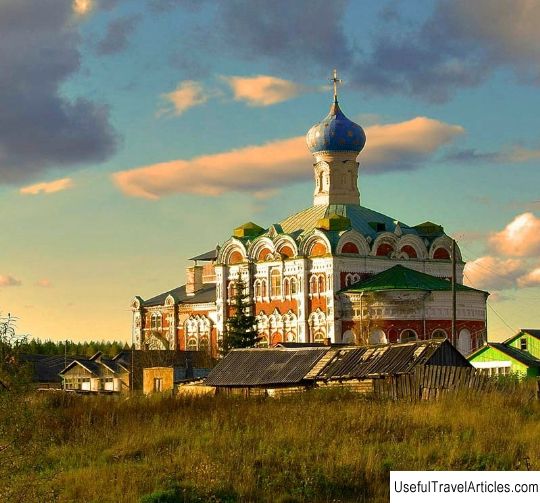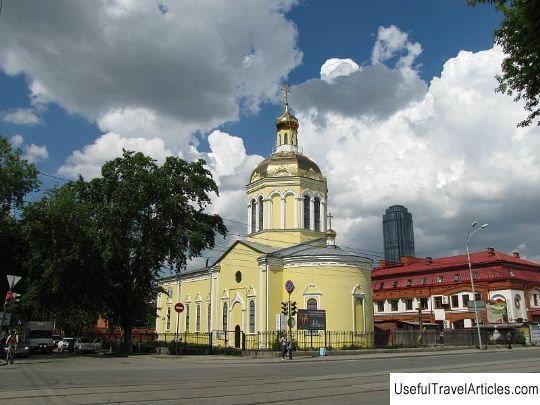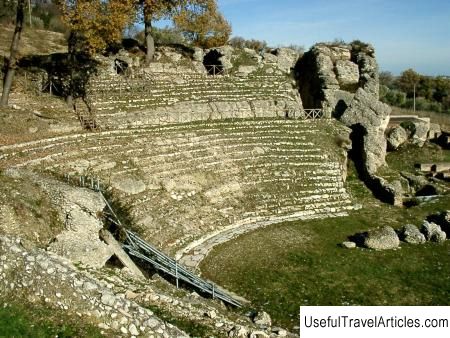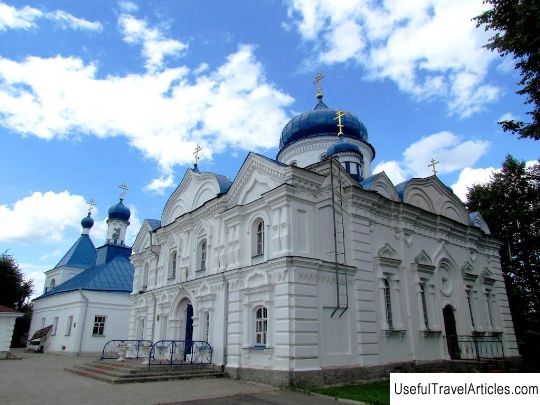Kyltovsky Holy Cross Monastery description and photos - Russia - North-West: Komi Republic
Rating: 8,0/10 (700 votes) 
Kyltovsky Holy Cross Monastery description and photos - Russia - North-West: Komi Republic. Detailed information about the attraction. Description, photos and a map showing the nearest significant objects. Photo and descriptionThe Kyltovsky Holy Cross Monastery is the first women's monastery in the Komi Republic, which was built at the end of the 19th century. The Exaltation of the Cross Monastery is located in the village of Kyltovo, Knyazhpogost District. The site for the construction of the monastery was not chosen by chance. According to legend, the "Cross of the San" (so named after the wooden cross located here) is associated with divine providence. According to the stories of the nuns of the monastery, a pious Christian lived here as a hermit, who placed a large wooden cross next to his hut. When he died, the lost travelers found the emitting cross. Therefore, a place on the banks of the river. Kyltovka was named "Cross Camp", and that wonderful cross is still kept in the monastery and has the gift of healing. Besides, the monastery is called the Exaltation of the Cross in honor of the Feast of the Exaltation of the Life-Giving Cross. The opinion about the date of the appearance of the cross in this place is ambiguous. Researcher Gagarin Yu.V. says that the relic was created in 1862 and connects the legend of its appearance with the name of the elder Vasily Pesterev, who drowned in the 1820s. in Vymi. The nuns of the Kyltov Monastery and Hieromonk Tikhon are sure that the cross was created much earlier - in the 18th century. The Kyltov Monastery was revived in 1995, after which it attracted a lot of public attention. The history of its creation is interesting. The construction of the monastery became possible after the merchant Afanasy Bulychev, the owner of the Seregovsky salt plant and shipowner in 1892 for for these purposes, he donated 2.5 thousand acres of land along with farm buildings in Kyltovo and 17.5 thousand rubles for the maintenance of the monastery. A. Bulychev, as the owner of the plant, was interested in creating an almshouse at the monastery for the widows of the factory workers, in the first five years the merchant promised to supply the monastery with bread, salt and sea fish at the rate of 20 monks. By 1893, about 20 acres of land were sown with bread, bricks were brought in for the construction of a church and a residential building, church utensils, furniture, service books, dishes, bells were prepared. In 1893 a decision was made to open a monastery, and it began to operate in 1894. The nuns who came from the Shenkuren monastery settled in the Holy Cross Monastery in Kyltovo, they were led by the future abbess Filiireta. In a relatively short period of time, a stone cathedral, a wooden church, one stone and five wooden dwelling and household buildings were built in the Kyltov Monastery, and a stone fence was erected. The Kyltovsky monastery had a large economy: in addition to land, a tar-making and pottery factories, a herd of 40 cows, large funds. The Kyltovsky monastery was a major center of religion in the Komi region. Local shrines, including the cross cut down by Elder V. Nesterov, attracted many pilgrims. In the fall of 1911, the construction of a five-domed stone church in the Russian-Byzantine style was completed. The temple was consecrated in honor of the Reverend Solovetsky miracle workers Savvaty and Zosima. In total, the monastery owned 44 buildings by 1911. A gold embroidery workshop and the only icon-painting workshop in the region worked in the monastery. In 1918 the monastery was closed, but the community continued to operate until 1923 as a labor agricultural cooperative, where former nuns worked. Later, almost all of them were repressed. In 1923, on the territory of the former monastery, a “Kyltovsky children's town” was organized for homeless children. A kindergarten, a state farm "Kyltovo", two elementary schools, a blacksmith's, sewing, shoemaking, carpentry, and other production training workshops worked here. In 1930, the Children's Town was liquidated. The agricultural department of Ukhtpechlag was organized here, and then Sevzheldorlag. Now from the buildings of the monastery part of the fence, the cathedral, the rebuilt fraternal building have been preserved. In 1971 the monastery was taken under protection as an architectural monument. Today the monastery has been revived. Abbess Stephanida is his abbess. On the territory of the monastery there are two active churches: the Monk Athanasius of Athos and the Monks Zosima and Savvaty.     We also recommend reading Derinkuyu description and photos - Turkey: Cappadocia Topic: Kyltovsky Holy Cross Monastery description and photos - Russia - North-West: Komi Republic. |




